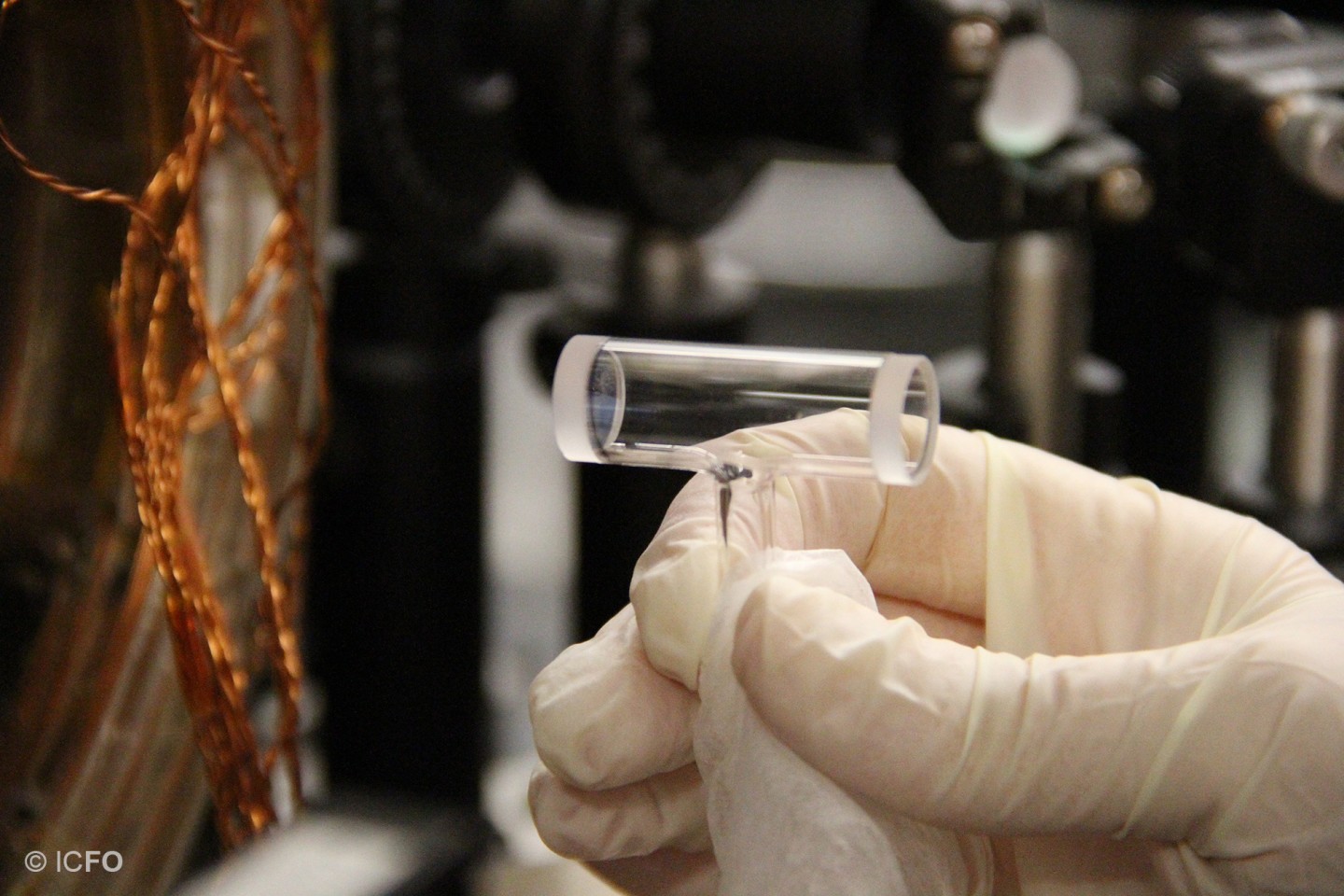Quantum entanglement is a phenomenon that’s as bizarre as it is fragile. Entangled particles are thought to lose this inexplicable link when exposed to outside factors. But now, physicists have managed to produce hot clouds of trillions of entangled atoms, breaking quantity records and showing that entanglement isn’t as fragile as previously thought.
Pairs or groups of particles can become so intertwined that measuring the state of one will instantly change properties of the others, no matter how far apart they are. That sounds weird enough already, but the implications threaten to undo our entire understanding of physics. Somehow, information seems to be sent between them much faster than the speed of light, which is meant to be impossible.
Einstein himself didn’t believe it at first, deriding it as “spooky action at a distance” and instead blaming hidden variables. But decades of experiments have shown that quantum entanglement is indeed the real deal, and we’re already starting to exploit the phenomenon for new technologies, such as faster and more secure communication networks.
But one problem is that this link between particles is very fickle, so tiny disturbances from other particles or events can disentangle them. To prevent that from happening, most experiments and technologies that use quantum entanglement can only work at ultracold temperatures – close to absolute zero (-273.15 °C, -459.67 °F). At that point almost all movement stops, so there’s no disturbances to break the link.
Of course, that extreme cooling isn’t practical for commercial or consumer products, so scientists are trying to find ways to make quantum entanglement possible at warmer temperatures. Past research has succeeded at room temperature, and now it’s been done under even hotter conditions.
The new study was conducted by researchers at ICFO, Hangzhou Dianzi University, and the Technical University of Valencia. The team mixed rubidium metal with nitrogen gas, and heated it up to 176.9 °C (350.3 °F). At that temperature, the metal vaporizes, causing free rubidium atoms to float around the chamber. There they become entangled with each other, and the team can measure that entanglement by shining a laser through the gas.
The researchers observed as many as 15 trillion entangled atoms in the gas, which they say is about 100 times more than any other experiment. Interestingly, the entanglement seemed to link atoms that aren’t necessarily close to each other – between any given pair are thousands of other atoms, each with their own partners.

ICFO
But the most intriguing part of the study is that the entangled state might not be as fragile as scientists had thought. In this hot, energetic gas, the atoms are constantly bouncing off each other, yet the quantum connections remain. It seems that the collisions don’t destroy the entanglement but pass it along to other atoms.
“If we stop the measurement, the entanglement remains for about one millisecond, which means that 1,000 times per second a new batch of 15 trillion atoms is being entangled,” says Jia Kong, first author of the study. “And you must think that 1 ms is a very long time for the atoms, long enough for about 50 random collisions to occur. This clearly shows that the entanglement is not destroyed by these random events. This is maybe the most surprising result of the work.”
The team says that this discovery could help in a few fields. In particular, magnetoencephalography, which is a magnetic brain imaging technique that uses these kinds of gases to detect extremely faint magnetic signals from brain activity.
“This result is surprising, a real departure from what everyone expects of entanglement,” says Morgan Mitchell, corresponding author of the study. “We hope that this kind of giant entangled state will lead to better sensor performance in applications ranging from brain imaging to self-driving cars to searches for dark matter.”
The research was published in the journal Nature Communications.
Source: ICFO
Source of Article